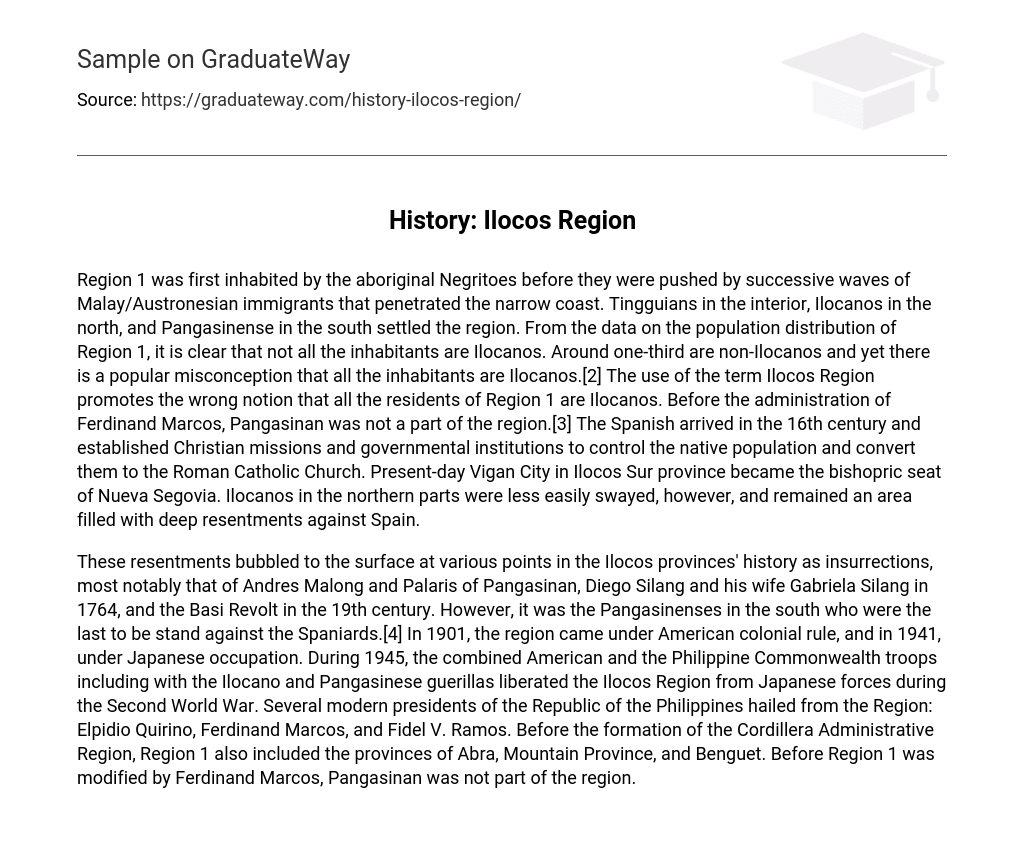Region 1 was first inhabited by the aboriginal Negritoes before they were pushed by successive waves of Malay/Austronesian immigrants that penetrated the narrow coast. Tingguians in the interior, Ilocanos in the north, and Pangasinense in the south settled the region. From the data on the population distribution of Region 1, it is clear that not all the inhabitants are Ilocanos. Around one-third are non-Ilocanos and yet there is a popular misconception that all the inhabitants are Ilocanos.[2] The use of the term Ilocos Region promotes the wrong notion that all the residents of Region 1 are Ilocanos. Before the administration of Ferdinand Marcos, Pangasinan was not a part of the region.[3] The Spanish arrived in the 16th century and established Christian missions and governmental institutions to control the native population and convert them to the Roman Catholic Church. Present-day Vigan City in Ilocos Sur province became the bishopric seat of Nueva Segovia. Ilocanos in the northern parts were less easily swayed, however, and remained an area filled with deep resentments against Spain.
These resentments bubbled to the surface at various points in the Ilocos provinces’ history as insurrections, most notably that of Andres Malong and Palaris of Pangasinan, Diego Silang and his wife Gabriela Silang in 1764, and the Basi Revolt in the 19th century. However, it was the Pangasinenses in the south who were the last to be stand against the Spaniards.[4] In 1901, the region came under American colonial rule, and in 1941, under Japanese occupation. During 1945, the combined American and the Philippine Commonwealth troops including with the Ilocano and Pangasinese guerillas liberated the Ilocos Region from Japanese forces during the Second World War. Several modern presidents of the Republic of the Philippines hailed from the Region: Elpidio Quirino, Ferdinand Marcos, and Fidel V. Ramos. Before the formation of the Cordillera Administrative Region, Region 1 also included the provinces of Abra, Mountain Province, and Benguet. Before Region 1 was modified by Ferdinand Marcos, Pangasinan was not part of the region.





